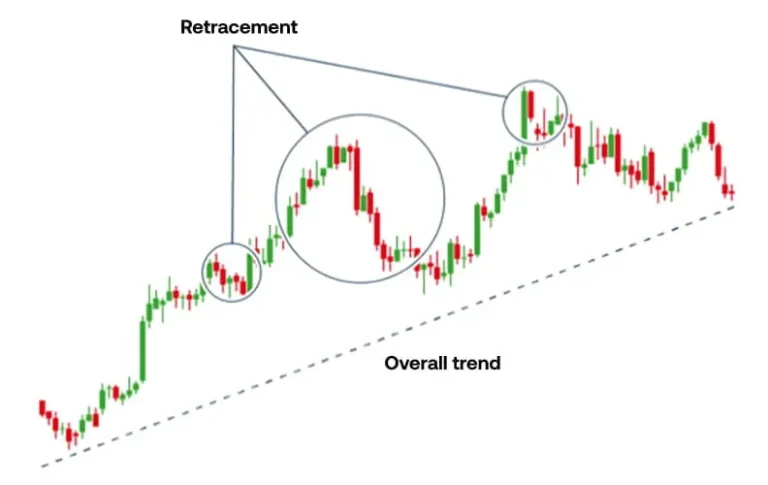Social trading is a method where traders share their strategies and trades on platforms, allowing others to follow or copy them. It's primarily used by both novice and experienced traders seeking to learn from one another.
- Main Benefit: Provides access to experienced traders' strategies.
- Primary Concern: Risk of blindly following others without due diligence.
- Best For: New traders looking for guidance and experienced traders seeking additional income.
- Important Note: Social trading does not eliminate market risks; personal research is still essential.
Pros and Cons of Social Trading
The following table outlines the advantages and disadvantages of social trading, providing a comprehensive overview for potential users.
| Pros | Cons |
|---|---|
| Access to experienced traders' strategies | Risk of blindly following others' trades |
| Saves time on market analysis | Potential for misinformation from unreliable sources |
| Opportunity for passive income through copy trading | Emotional stress from pressure to perform |
| Facilitates portfolio diversification easily | Lack of personal accountability in trading decisions |
| Community support and networking opportunities | Overwhelming amount of information can lead to confusion |
| Learning opportunities from observing others' strategies | Dependence on the performance of others can be risky |
| Potential for lower trading costs on some platforms | No guaranteed profits; past performance does not predict future success |
| Ability to interact and ask questions in real-time | Privacy concerns with sharing personal trading data |
| Access to a variety of trading styles and strategies | Regulatory challenges and lack of oversight on platforms |
| Can improve decision-making through collective insights | Pseudonymous traders may not be as knowledgeable as claimed |
| Easier entry into trading for beginners without prior experience | The risk of emotional trading due to peer pressure or FOMO (fear of missing out) |
| Potential to earn rewards for sharing successful trades as a trader leader | Difficulties in identifying credible sources among many traders |
| Encourages a more relaxed approach to investing for anxious traders | The risk of market volatility impacting copied trades negatively |
| A chance to build a following as an expert trader over time | The potential for fraud or manipulation on unregulated platforms |
| Can help new traders develop their skills gradually by learning from others' successes and failures | The learning curve may slow down if relying too heavily on copying trades instead of practicing independently. |
| A variety of tools and features available on many platforms enhance user experience. | The need for constant vigilance when following other traders’ strategies can be stressful. |
| A sense of belonging within a community can enhance motivation and engagement. | The possibility that top-performing traders may not maintain their success long-term. |
| Easier access to global markets through social trading platforms. | The risk that social trading can lead to herd behavior, increasing market volatility. |
| The ability to set personal risk parameters while copying trades from others. | The complexity of managing multiple copied trades can lead to confusion. |
| A chance for experienced traders to monetize their expertise by sharing their insights. | The potential for conflicts of interest if influencers promote certain strategies for personal gain. |
| The ability to track performance metrics of other traders helps inform decisions. | A lack of comprehensive education resources can leave new traders underprepared. |
| The potential for automated trading features that simplify the process further. | The risk that social trading may create complacency among users regarding market research. |
| A diverse range of assets available for investment through various traders' portfolios. | The possibility that social dynamics may overshadow sound investment principles. |
| A platform for sharing insights can lead to improved market understanding over time. | The challenge of maintaining emotional stability amidst fluctuating peer performances. |
Social Trading Market Growth and User Engagement
An overview of the social trading market's expansion, user demographics, and engagement metrics, highlighting its increasing prominence in the financial sector.
| Statistical Analysis & Market Data | |
|---|---|
| Global Market Size (2023) | Approximately USD 8.2 billion |
| Projected Market Size (2032) | Expected to reach USD 15.99 billion |
| Compound Annual Growth Rate (CAGR) | Estimated at 7.40% from 2023 to 2032 |
| Active Users Worldwide | Over 30 million users engaged in social trading platforms |
| Average User Age Range | Predominantly between 25-40 years old |
| Percentage of New Traders | Approximately 78% of users are novice traders |
| Mobile Platform Usage | 65% of users access platforms via mobile devices |
| Top Asset Traded | Forex, accounting for 45% of trades |
| Average Monthly Trades per User | 15 trades |
| Market Penetration in Europe | Europe holds 35% of the global social trading market share |
Technical Requirements and Regulatory Considerations in Social Trading
Key technical specifications and compliance standards essential for participating in social trading platforms.
| Technical Specifications & Requirements | |
|---|---|
| Minimum Internet Speed | Broadband connection with at least 5 Mbps |
| Supported Operating Systems | Windows 10 or higher, macOS 10.13 or higher, iOS 12 or higher, Android 8.0 or higher |
| Required Device Specifications | Minimum 4 GB RAM, Dual-core processor |
| Regulatory Compliance | Platforms must comply with financial regulations such as MiFID II in Europe |
| Data Encryption Standards | AES-256 encryption for data security |
| User Authentication | Two-factor authentication (2FA) required |
| API Integration | Support for RESTful APIs for third-party tools |
| Latency Requirements | Maximum acceptable latency of 200 milliseconds |
| Backup and Recovery | Daily data backups with a 99.9% recovery success rate |
| Customer Support Availability | 24/7 multilingual support |
Cost Implications and Value Assessment in Social Trading
An analysis of the financial aspects associated with social trading, including fees, potential returns, and cost-benefit considerations.
| Cost & Value Analysis | |
|---|---|
| Average Platform Subscription Fee | USD 20 per month |
| Commission per Copied Trade | Typically 1% of the trade value |
| Profit Sharing with Signal Providers | Generally 20% of profits earned |
| Potential Annual Return on Investment | Average of 12%, depending on market conditions and strategies used |
| Withdrawal Fees | USD 5 per transaction |
| Inactivity Fees | USD 10 per month after 12 months of inactivity |
| Minimum Investment Requirement | USD 200 |
| Cost of Premium Features | Additional USD 30 per month for advanced analytics |
| Currency Conversion Fees | 0.5% of the transaction amount |
| Potential Savings from Automated Trading | Up to 15% reduction in transaction costs due to optimized trade execution |
Comparative Analysis of Social Trading Versus Traditional Trading
A side-by-side comparison highlighting the differences, advantages, and disadvantages between social trading and traditional trading methods.
| Comparative Analysis & Alternatives | |
|---|---|
| Decision-Making Process | Social Trading: Decisions influenced by community insights; Traditional Trading: Independent decision-making |
| Required Experience Level | Social Trading: Suitable for beginners; Traditional Trading: Requires substantial market knowledge |
| Time Commitment | Social Trading: Less time-intensive; Traditional Trading: Requires significant time for analysis |
| Risk Management | Social Trading: Dependent on copied traders; Traditional Trading: Direct control over risk management |
| Costs | Social Trading: Lower entry costs; Traditional Trading: Higher costs for research and tools |
| Profit Potential | Social Trading: Dependent on copied traders' success; Traditional Trading: Individual performance determines profit |
| Community Support | Social Trading: Extensive community support; Traditional Trading: Limited to individual analysis |
| Technology Use | Social Trading: Automated, user-friendly platforms; Traditional Trading: Requires manual analysis |
| Learning Curve | Social Trading: Easier for beginners; Traditional Trading: Steeper learning curve |
| Emotional Trading | Social Trading: Reduced due to automation; Traditional Trading: Higher emotional involvement |
Future Trends and Innovations in Social Trading
Anticipated advancements, market trends, and technological innovations expected to shape the future of social trading.
| Future Outlook & Industry Trends | |
|---|---|
| Integration of AI and Machine Learning | Enhanced predictive analytics and trade strategies |
| Growth of Mobile Platforms | Continued rise in mobile-first social trading platforms |
| Blockchain and Decentralization | Increased transparency through decentralized systems |
| Expansion of Emerging Markets | Rapid adoption in Asia-Pacific and Latin America |
| Gamification Features | Platforms incorporating gaming elements to increase user engagement |
| Social Media Integration | Closer ties with popular social media platforms |
| Rise of Copy-Trading Automation | More advanced automated trade execution tools |
| Stricter Regulatory Frameworks | Governments enforcing stricter compliance standards |
| AI-Powered Risk Management Tools | Tools helping traders optimize risk exposure |
| Growing Focus on Sustainability | Traders preferring ESG-focused investments |







